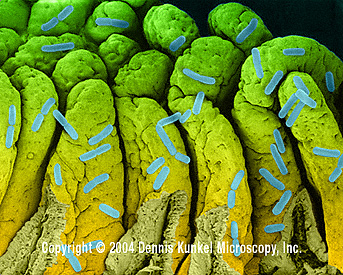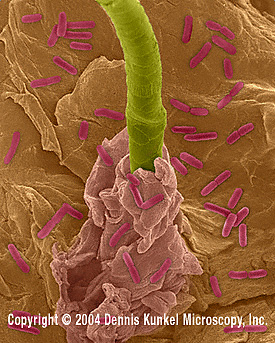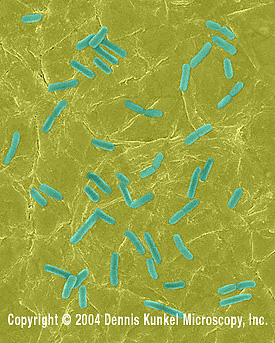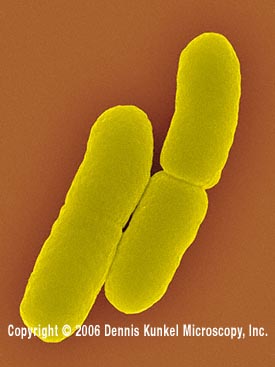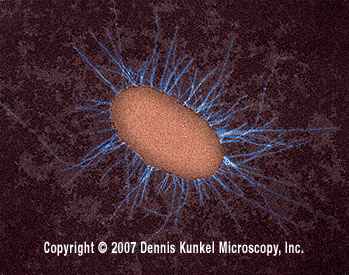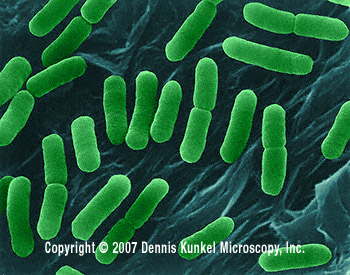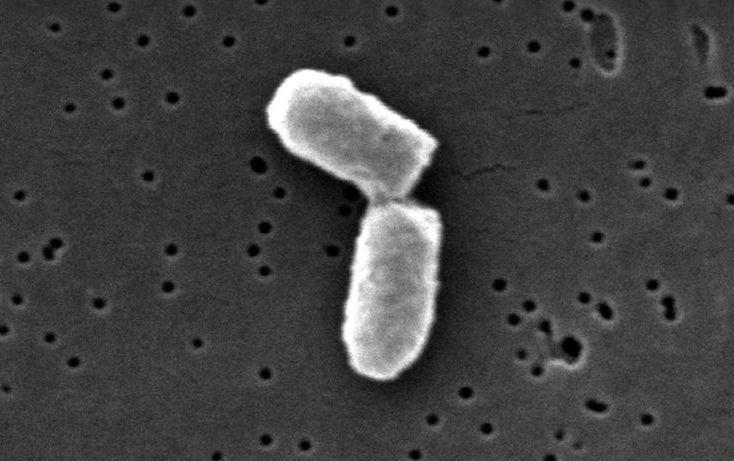Reproduction
How does E. coli reproduce?
E. coli reproduces by two means: cell division, and the transfer of genetic material through a sex pilus (conjugation).
E.coli cell division
Photo from a Public Domain, Retrieved from Wikimedia Commons
Escherichia coli, when undergoing cellular division, is using a means of asexual reproduction because there is no transfer of genetic material; the bacterium is merely making an exact copy of itself (watch out for the attack of the Clones!). This is the most prevalent form of reproduction for E. coli. The individual bacterium begins this process by elongation of the cell, followed by almost exact replication of the genome so there are two identical copies. Mutations and mistakes may happen during genetic replication, but normally these occur in small numbers and don't have a large effect on the bacterium. A septum is formed, and the cell equally divides the cellular components and one copy of the parental genome gets placed in each side of the cell. The cell divides, leaving two copies of the original bacterium called daughter cells.
E. coli life cycle
Photo from a Public Domain, Retrieved from Wikimedia Commons
E. coli also undergo a process with direct cell to cell contact known as conjugation by which genetic material is transferred between two
 E. coli using a Sex Pilus © Dennis Kunkel Microscopy, Inc. Used with Permission |
bacterial cells via
a specialized type of fimbriae called sex pili (also known as
conjugate fimbriae).
This is NOT
sexual reproduction because there is no fusion of gametes
present. is more infrequent than cell division, but it allows
for a means of genetic diversity between bacteria, and the
possibility of beneficial adaptations
such as antibiotic resistance.
E. coli that contain an fertility factor (F+) know as a plasmid undergo conjugation by first copying its genome. This bacterium is called the donor. It then releasing an enzyme that |
contains a "mating signal", showing that it is ready for genetic transfer. This mating enzyme attracts a bacteria that doesn't contain the fertility factor (F-). This bacterium is the recipient. The donor E. coli bacterium connects the sex pilus to the recipient bacterium, and injects the plasmid. Once the pilus is disconnected, the transfer stops.

Back to Organismal Biology Websites
Questions or Comments: Contact Justine Moder
©April 2008

